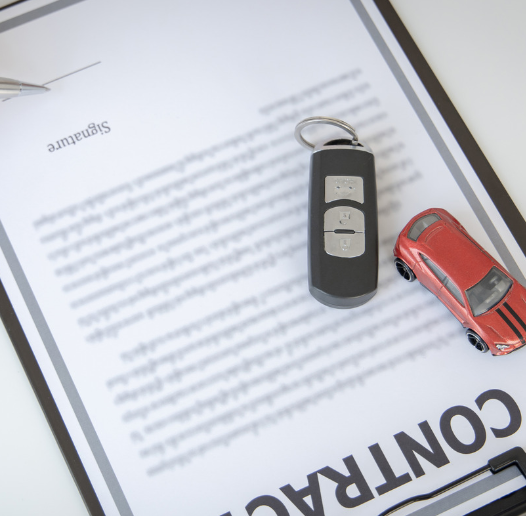Return to Invoice Gap Insurance Explained: Why It Matters and How It Protects UK Drivers

Buying a new car is one of the most exciting investments you can make. But as any car owner in the UK knows, the value of a new vehicle begins to drop the moment it leaves the dealership. Within a few years, most cars lose a significant portion of their original value due to depreciation. If the worst happens, such as an accident or theft, your comprehensive motor insurance will usually only cover the car’s market value at the time of loss. That’s where return to invoice gap insurance steps in.
This type of cover bridges the gap between your insurance payout and the original price you paid for your car. In this blog, we’ll answer what is return to invoice gap insurance, how it works, and why more drivers are turning to it for peace of mind.
What Is Return to Invoice Gap Insurance?
Return to invoice gap insurance is designed to protect you against the financial shortfall created by depreciation. Standard motor insurance typically pays the car’s market value when a vehicle is declared a total loss. The issue is that cars lose value quickly, which can leave you thousands of pounds out of pocket compared to the amount you originally paid.
With gap insurance return to invoice, if your car is written off or stolen, your policy will cover the difference between your motor insurer’s settlement and the purchase price listed on your invoice. In other words, it ensures you are put back in the financial position you were in when you bought the car.
For example, imagine you bought a new car for £25,000. After two years, it is worth only £15,000 due to depreciation. If it is stolen and your insurer pays £15,000, you’d face a £10,000 shortfall compared to what you originally paid. A return to invoice gap insurance policy would cover that £10,000 gap, so you are not left out of pocket.

Why Return to Invoice Gap Insurance Matters?
1. Protecting Against Depreciation
The reality of car ownership is that vehicles lose value quickly. Some cars can depreciate by 30% in the first year alone, and by more than 50% after three years. Return to invoice gap insurance ensures you don’t suffer the financial consequences of that loss if your car is written off.
2. Ideal for New or Nearly New Cars
If you’ve bought a car outright or financed it, return to invoice cover is especially valuable for brand-new or nearly new vehicles. These cars are the most affected by depreciation, meaning the gap between the invoice price and the insurer’s market valuation can be significant.
3. Peace of Mind
Owning a car comes with enough stress already. Knowing that you won’t face a financial setback if your car is stolen or written off provides peace of mind. Instead of worrying about how much you will get back, you can feel secure that you’ll recover the full invoice value.
4. Flexible Use
Return to invoice gap insurance can work whether you’ve paid in cash, used a bank loan, or taken out dealer finance. No matter the purchase method, the goal is the same: covering the difference between your insurance settlement and the original cost of the car. Compare providers to get the coverage you need.
How Return to Invoice Gap Insurance Works in Practice?
When your car is declared a total loss, you will first receive a settlement from your standard car insurance provider. This will be based on the car’s market value at the time of the incident. If you also have return to invoice gap insurance, you can then make a claim on that policy to top up the payout so it matches the purchase price on your invoice.
For financed cars, the policy can sometimes even help clear the outstanding balance if the settlement and invoice payout do not fully cover what you owe. This ensures you are not left repaying finance on a car you no longer have.
The process is simple:
- Report the incident to your motor insurer.
- Receive the market value settlement.
- File a claim with your return to invoice gap insurance provider.
- The provider pays the difference to bring you back to the full purchase price.
What Is Return to Invoice Gap Insurance Best Suited For?
This type of policy is particularly well-suited for:
- New car buyers: If you’ve just driven a new car away from the dealership, depreciation starts immediately, so you’ll benefit the most.
- Financed purchases: Many UK drivers finance their vehicles. If your car is written off, return to invoice cover ensures you won’t owe money beyond what your insurer pays.
- High-value cars: Premium and luxury models often lose value quickly. This makes the potential shortfall greater, and return to invoice insurance especially useful.
- Drivers seeking long-term protection: If you plan to keep your vehicle for several years, this cover ensures you’re not left disadvantaged as depreciation accelerates.
What Return to Invoice Gap Insurance Does Not Cover?
While return to invoice gap insurance is highly protective, it’s important to understand its limitations. Common exclusions include:
-
Cars older than a certain age at the time of policy purchase (often 7 to 10 years).
-
Vehicles with very high mileage at the time of cover.
-
Write-offs that occur outside of comprehensive motor insurance claims (such as non-insured damage).
-
Non-UK-registered vehicles.
Always read the policy terms carefully to understand what is and isn’t included.
How to Buy Gap Insurance Return to Invoice?
When shopping for this type of cover, it’s important to compare providers and policies carefully. Dealerships often offer gap insurance when you purchase your car, but these products can be significantly more expensive than buying independently. Many UK insurers and brokers offer competitive policies, often at a fraction of the dealership cost.
To get the best deal, consider the following:
-
The maximum payout limit (ensure it matches your car’s invoice value).
-
The length of cover (many policies run for 2–5 years).
-
Whether the policy covers financed vehicles and clears outstanding loans.
-
Exclusions that could affect your eligibility.
Benefits of Choosing Return to Invoice Gap Insurance
1. Financial Security: You avoid unexpected losses if your car is written off.
2. Protection for Your Investment: Cars are expensive; this cover ensures your money is safeguarded.
3. Flexibility: Works for financed, leased, or outright purchases.
4. Peace of Mind: Reduces stress during an already difficult time.
5. Value for Money: Especially if purchased outside of a dealership, premiums can be very
Common Questions About Return to Invoice Gap Insurance
1. What is return to invoice gap insurance in simple terms?
It’s a type of insurance that pays the difference between your insurer’s payout (market value) and the original price you paid for your car.
2. Do I need it if my car is older?
Generally, it’s most valuable for new or nearly new cars. If your car is older and already heavily depreciated, the benefit may be less.
3. Is it compulsory?
No, return to invoice gap insurance is optional. But for many drivers, especially those financing or buying new, it provides essential protection.
4. How long should I keep it for?
Policies typically last 1–4 years, which aligns with the period when depreciation is steepest.
Why Return to Invoice Gap Insurance Is Popular in the UK?
The UK has one of the most competitive car markets in the world, and with many drivers choosing to finance vehicles, the risk of being left with a financial shortfall is high. Return to invoice gap insurance is increasingly popular because it addresses this issue directly.
It reassures buyers that if the worst happens, they won’t be financially disadvantaged. As cars continue to depreciate rapidly, and replacement costs rise, this type of insurance has become a practical and often necessary part of vehicle ownership.
Conclusion
So, what is return to invoice gap insurance? It is a policy that ensures if your car is written off or stolen, you will be reimbursed up to the original purchase price of the vehicle. By bridging the gap between your motor insurer’s payout and the cost you originally paid, this insurance offers real financial security.
Whether you’re a first-time buyer of a new car, financing a vehicle, or simply want peace of mind, gap insurance return to invoice is a smart option. It protects your investment, ensures you’re not left out of pocket, and makes car ownership less stressful.
In a world where vehicles depreciate rapidly, return to invoice gap insurance gives UK drivers confidence that they’ll always get back what they put in.

